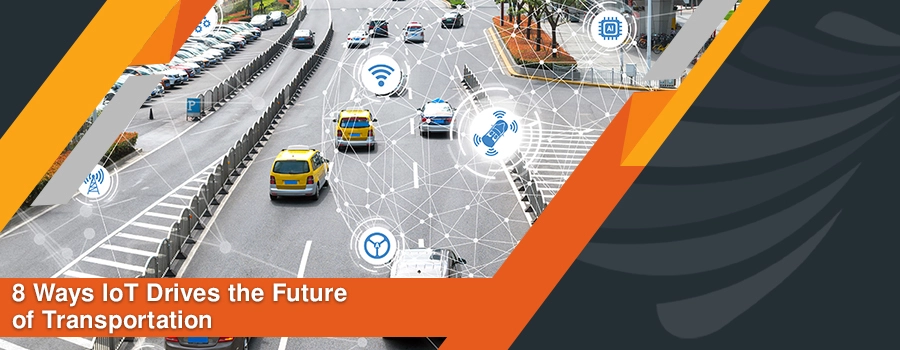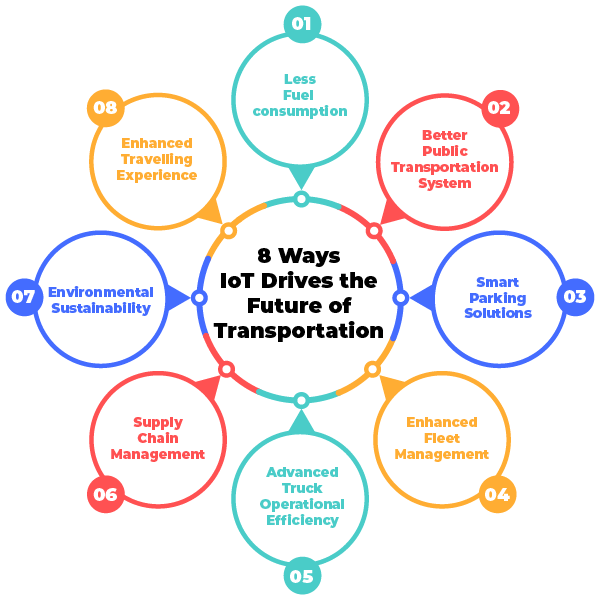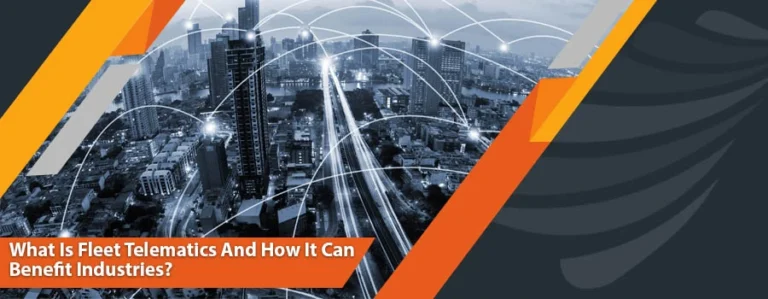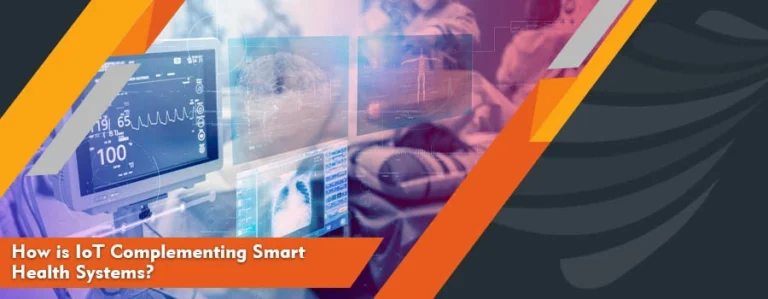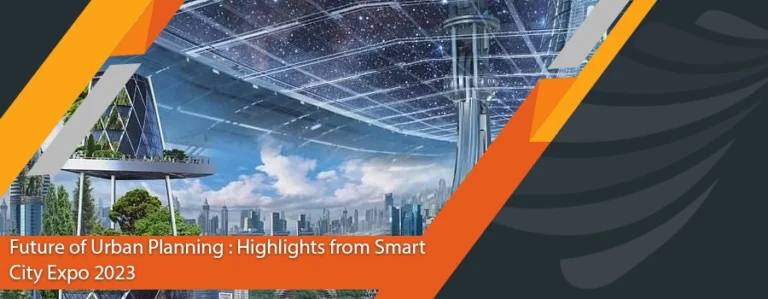In the present era of technological growth, the Internet of Things has emerged as a driving force to resolve complex issues in different industries, including transportation. The role of IoT is paramount, from optimizing efficiency to enhancing safety measures. In this blog, you are welcome to explore six ways IoT is propelling the future of transportation, revolutionizing how we commute daily by resolving daily traffic hassles.
Join us as we explore the innovative applications of IoT technology that are reshaping the transportation landscape and opening new opportunities for a better future.
What are Global Transportation Crises?
Worldwide, several issues related to transportation management result in traffic congestion, greenhouse gas emissions, air and noise pollution, road accidents, and crashes. Health institutions are concerned about road accidents since they result in significant health issues and cause deaths or disabilities in around 1.35 million individuals annually. With an estimated 1.3 million deaths, 93% of road traffic injury-related mortality in 2019 happened in low- and middle-income nations. Traffic accidents will rank as the seventh most common cause of death worldwide by 2030, indicating the severity of this problem.
What is IoT-enabled Transportation Management?
Conventional transportation management frequently results in higher carbon emissions and fuel consumption. IoT-enabled transportation management uses the application of Internet of Things (IoT) technology to streamline and optimize several transportation system components. This covers various applications, such as fleet management, logistics, infrastructure, and automobiles.
IoT-enabled transportation management entails integrating sensors, connections, data analytics, and automation to obtain real-time data, make educated decisions, and enhance transportation networks’ general effectiveness, safety, and sustainability.
8 Ways IoT Drives the Future of Transportation
The transportation industry faces several challenges due to poor transportation structure. With the help of IoT technology, we can resolve these challenges. We can open new gates for a better transportation infrastructure that will be more efficient, user-friendly, environmentally friendly, and sustainable. Let’s explore how IoT resolves the most pressing issues present in the traditional transport industry:
1. Less Fuel Consumption
Conventional route management frequently results in higher carbon emissions and fuel consumption. IoT-enabled route management systems optimize routes using real-time data, which lowers emissions and fuel usage. According to a McKinsey & Company analysis, IoT-enabled route optimization can save fuel use by up to 15%. Furthermore, IoT sensors—such as motion and heat—allow more intelligent use of energy resources, saving administrators money on transportation.
2. Better Public Transportation System
Smart public transportation can be implemented with IoT sensors. It allows passengers to track the location of public buses in real time on their mobile app. Smart public transport services facilitate better planning for commuters and allow drivers to navigate via optimal routes, avoiding traffic jams and saving energy and time. They attract people to opt for public buses instead of using individual cars and saving fuel costs. This ultimately reduces traffic congestion and carbon emissions from numerous private vehicles.
3. Smart Parking Solutions
IoT-enabled smart parking systems like ParkSmart provide real-time data on parking availability. Users with mobile apps can track nearby parking lots and book their parking spaces. It saves their time, money, and fuel and reduces traffic congestion, accidents, and mismanagement. Also, installing IoT sensors in the parking lots enhances convenience for vehicle owners and reduces operation and maintenance costs.
4. Enhanced Fleet Management
IoT-enabled fleet management systems like TrackPro provide real-time tracking of vehicles and even notify if the vehicle crosses the set virtual boundaries. Such IoT solutions allow fleet managers to track their assets and minimize the probability of inefficiencies and delays in operations.
5. Advanced Truck Operational Efficiency
Through real-time monitoring and tracking, IoT solutions enable trucking organizations to improve the operational efficiency of their fleets. The American Transportation Research Institute claims that predictive maintenance enabled by IoT technology can reduce vehicle downtime by as much as 75%. Additionally, engine oil leak warnings make preventative maintenance possible, reducing downtime and enhancing vehicle performance. This lowers the possibility of unforeseen malfunctions and guarantees more seamless operations.
6. Supply Chain Management
IoT-enabled transportation management solutions allow end-to-end visibility and tracking of goods in transit. IoT sensors attached to shipments can monitor humidity, location, and temperature. This helps stakeholders gain real-time insights into the status and condition of goods throughout the supply chain. Such IoT solutions also help drivers choose the best route to reach their destination on time and avoid traffic hassles. Also, the IoT-driven fleet management systems provide drivers with weather updates, helping them choose the right time to travel and avoid accidents.
7. Environmental Sustainability
IoT plays a major role in resolving environmental concerns and promoting transportation sustainability. By providing alternative modes of transport like carpooling and biking and shifting towards electric vehicles, IoT helps reduce greenhouse gas emissions and improve air quality. Also, IoT-enabled transportation management systems optimize traffic flow, promote eco-friendly driving behaviors, reduce idling times, and mitigate environmental concerns of transportation.
8. Enhanced Travelling Experience
IoT-driven applications also transform the traveling experience by providing real-time information and personalized services. Data collection helps the system analyze user needs, and the integration of AI algorithms analyzes user behavior to provide personalized recommendations. Drivers get strong Wi-Fi connections and song and movie suggestions according to their tastes on their screens. Also, people with disabilities get automated assistance to enhance their driving experience. With the integration of augmented reality, users get complete guidance about their routes and send alerts to avoid emergencies and accidents.
To Sum Up
IoT integration in transportation management revolutionizes how we commute and manage daily traffic hassles. By leveraging real-time data, connectivity, and automation, IoT enhances safety, efficiency, and sustainability and revolutionizes how we experience and navigate the world. As we embrace the possibilities of IoT-driven transportation, we embark on a journey toward a future where mobility is seamless, accessible, and environmentally conscious, promising a brighter tomorrow for future generations.

